Museum of Southern Jewish Experience is Open
Three Atlantans select their favorite artifacts from the museum and share their memories of growing up in the Big Easy. Take a virtual tour of through ten of its artifacts.
Though representing less than 1 percent of the population of southern states, and only 2.1 percent of the nation’s Jewish population, Southern Jews have made a substantial mark on the communities where they’ve lived. From Jewish mayors, sheriffs, council members and civic leaders to entertainers and educators, Jews have played major roles in the nation’s “Bible Belt,” a region steeped in deep Christian faith.
The Museum of the Southern Jewish Experience, which opened in New Orleans in 2021, shines a light on the varied experiences of these strangers in a strange land. Here, three Jewish Atlantans select their favorite artifacts from the museum and share their memories of growing up in the Big Easy.
Susan Hart Sandler
Community Quilt, 1885
Gallery 1
“My growing up Jewish in New Orleans was all about community — not just in a local sense, but regional, as well. My father, Carole B. Hart, along with two of his brothers, was raised in the Jewish Orphan’s Home, an orphanage created for traditional and nontraditional orphans. My grandmother was widowed when my father was an infant, had to go to work to support her family, and moved from Texas to New Orleans. He always stressed how fortunate he was to have had such incredible support, support that impacted his life and his actions as a community leader. As a result, I was ingrained with the values of chesed and tzedakah.
“I grew up knowing the value of community. I attended Isidore Newman School, created as the educational facility for the children of the orphanage. I became active in SoFTY (Southern Federation of Temple Youth) and spent summers at Henry S. Jacobs camp and conclaves (Jewish youth conventions), together with friends from the region (Louisiana, Mississippi, Tennessee, Arkansas). I learned firsthand what it meant to be Jewish from my regional friends — those who were members of the only Jewish family in their community; those who experienced anti-Semitism, many times due to the lack of education of others; the challenge of celebrating holidays in the midst of a predominately Christian society. It helped to solidify my identity such that I pursued Jewish communal work as my profession.
“To this day, my closest friends are those I met through our regional Southern community. We remain connected through our common Jewish heritage. The Museum provides all of us the opportunity to learn and experience the history, the artifacts and stories that solidified the Jewish South, and now share its very rich heritage.”
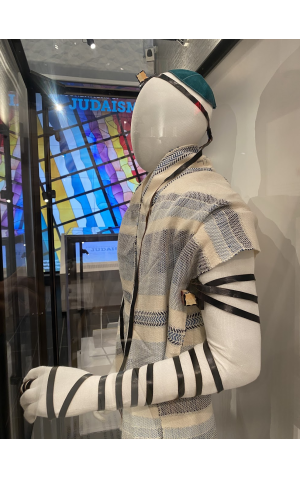
Deborah Lamensdorf Jacobs
Cotton Tallit, ca. 2000
Gallery 2
“Growing up in a small yet culturally diverse Mississippi Delta town, it was a privilege and a responsibility for our family to represent Judaism to our neighbors. The MSJE is the best answer to the question, ‘What was it like being Jewish in a small Southern town?’
“In 1884, at the age of 15, my great-grandfather, Morris Grundfest, emigrated from Minsk to the Lower East Side of New York. In 1892, he married Mollie Bernstein, from Pinsk, and three of their eight children were born in New York. Hearing from other Jewish immigrants about opportunities in the Mississippi Delta, Morris and Mollie relocated the family in the late 1890s and he began supporting his growing family as a peddler. He built his general store, M. Grundfest, in Cary, Miss., and in 1919 had the opportunity to purchase 200 acres of cotton land.
“My family did not have Jewish artifacts from our ancestors. However, we still own and farm that first piece of cotton land Morris Grundfest purchased in 1919. I realized this cotton land presented the perfect opportunity to create Jewish artifacts for our family. I handwove this cotton tallis for my father, Ben Lamensdorf, during the same time that I handwove the tallitot for my sons’ bar mitzvahs. The white cotton yarn contained in each tallit was spun from cotton grown on Morris Grundfest’s farmland. This tallis is on loan to the MSJE and used by our family on special occasions.”
Barbara Ducoffe
Tzedakah Box, ca. 1960s
Gallery 3
“Though I have lived in Atlanta for over 50 years, New Orleans is still my home. I also feel equally welcome in many Mississippi places, as I have visited them frequently. Many of these small Jewish communities are dying or gone now. The MSJE has kept these communities, artifacts, legends and people-to-people contact alive.
“I am especially proud of my first cousin Macy Hart, who had the foresight to see and do something about the small-town Jewish losses. MSJE would not exist without his proactive career. So many of the South’s children ended up in larger cities like Atlanta or New Orleans, but their roots will always be in their beloved hometown, even if the opportunities weren’t there.
“I feel a special pull to two objects that represent my formative years. The cap (#7) reminds me of my dad’s service during World War II. He never spoke about his times in the army, but I knew he was my hero! The tzedakah box touched me, as Rabbi Feibelman was my rabbi growing up. Rabbinic, sincere and certainly a traditional reform rabbi, he was a role model for our entire community.
“Atlanta and New Orleans are connected by these common links, people to people.”
Visit the Museum of Southern Jewish Experience from the comfort of your armchair, with a self-guided tour of the collection, organized by the museum’s curator, Anna Tucker.
Gallery 1: From Immigrant to Southerner
Artifact #1: Cigarette Case, c. 1910s. Jewish immigrants to the American South often had to make hard decisions about what to bring with them. This small silver case, likely used to hold cigarettes, was one of several items brought by Sarah and William Holtzman when they emigrated from Russia in the early 1900s, eventually living in Lake Charles and New Orleans, La. (Donated to the MSJE Permanent Collection by Edythe H. Sofer, daughter of William and Sarah (Howsoniker) Holtzman.)
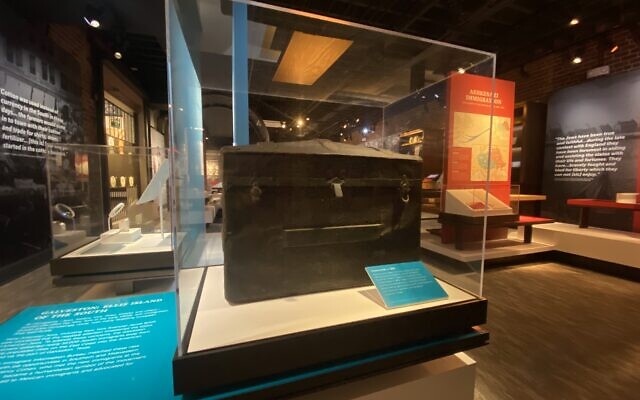 Artifact #2: Travel Trunk, c. 1900s. Fearing conscription into the Russian army and seeking political freedom, Jewish immigrant Rachmiel “Robert” Shapiro immigrated to the United States in 1905. Shapiro’s transcontinental journey included secretly crossing the Russian border before gaining passage on a ship departing from Bremen, Germany, and landing in Galveston, Texas. (Donated to the MSJE Permanent Collection by Carla Klausner.)
Artifact #2: Travel Trunk, c. 1900s. Fearing conscription into the Russian army and seeking political freedom, Jewish immigrant Rachmiel “Robert” Shapiro immigrated to the United States in 1905. Shapiro’s transcontinental journey included secretly crossing the Russian border before gaining passage on a ship departing from Bremen, Germany, and landing in Galveston, Texas. (Donated to the MSJE Permanent Collection by Carla Klausner.)
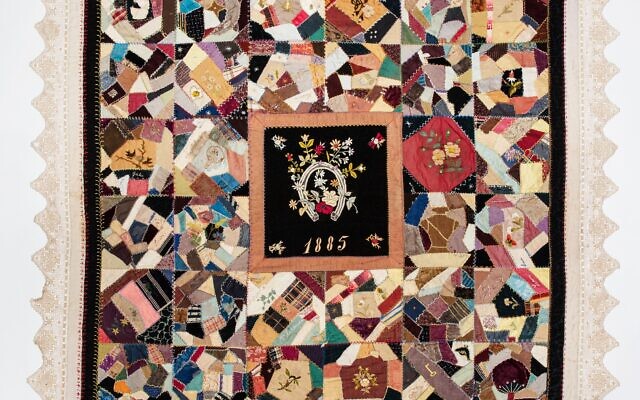 Artifact #3: Community Quilt, 1885. This Victorian-era quilt, made by the Jewish Ladies’ Sewing Circle of Canton, Miss., likely was raffled off in support of Canton’s Temple B’nai Israel. The congregation had only recently opened its doors in 1879, following setbacks from the yellow fever epidemics of the 1870s. The quilt was organized by Bertha Loeb and features the asymmetrical designs and variety of fabrics common in the “crazy quilt” style. Each square features hints to the quilters’ identities and interests, and names like “Mary,” “Leon,” and “Sam” were stitched into the fabric among embroidered beetles, keys and flowers. (Donated to the MSJE Permanent Collection by Isabel Wile Goldman in memory of Bertha Loeb.)
Artifact #3: Community Quilt, 1885. This Victorian-era quilt, made by the Jewish Ladies’ Sewing Circle of Canton, Miss., likely was raffled off in support of Canton’s Temple B’nai Israel. The congregation had only recently opened its doors in 1879, following setbacks from the yellow fever epidemics of the 1870s. The quilt was organized by Bertha Loeb and features the asymmetrical designs and variety of fabrics common in the “crazy quilt” style. Each square features hints to the quilters’ identities and interests, and names like “Mary,” “Leon,” and “Sam” were stitched into the fabric among embroidered beetles, keys and flowers. (Donated to the MSJE Permanent Collection by Isabel Wile Goldman in memory of Bertha Loeb.)
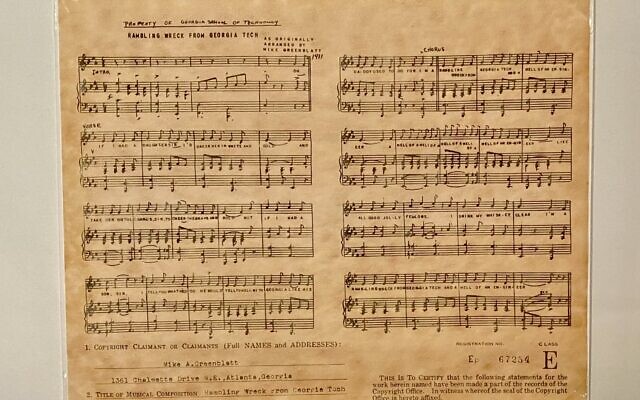 Artifact #4: Georgia Tech sheet music, 1911 [on loan from the William Breman Jewish Heritage Museum]. Michael Greenblatt of Atlanta, Ga., is credited with arranging Georgia Tech’s well-known fight song, “Ramblin’ Wreck.” Originally from Knoxville, Tenn., Greenblatt moved to Atlanta following his service in the Spanish-American War. A talented trombonist, Greenblatt later served as bandmaster for the Atlanta police and the Georgia Power Company and became a fixture of numerous social and religious institutions across the city, including Ahavath Achim, Scottish Rite and the Mayfair Club. (On loan from the Ida Pearle and Joseph Cuba Archives for Southern Jewish History at The William Breman Jewish Heritage Museum in Atlanta, Ga.)
Artifact #4: Georgia Tech sheet music, 1911 [on loan from the William Breman Jewish Heritage Museum]. Michael Greenblatt of Atlanta, Ga., is credited with arranging Georgia Tech’s well-known fight song, “Ramblin’ Wreck.” Originally from Knoxville, Tenn., Greenblatt moved to Atlanta following his service in the Spanish-American War. A talented trombonist, Greenblatt later served as bandmaster for the Atlanta police and the Georgia Power Company and became a fixture of numerous social and religious institutions across the city, including Ahavath Achim, Scottish Rite and the Mayfair Club. (On loan from the Ida Pearle and Joseph Cuba Archives for Southern Jewish History at The William Breman Jewish Heritage Museum in Atlanta, Ga.)
Gallery 2: Foundations of Judaism
Artifact #5: Cotton Tallit, c. 2000s. The cotton for this tallit was grown by Ben Lamensdorf on land purchased by Morris Grundfest in Cary, Miss., in 1919. Woven by Morris Grundfest’s granddaughter, Betty Lee Lamensdorf, and great-granddaughter Deborah Lamensdorf Jacobs, it represents generations of the Lamensdorf family. It is accompanied by a kippah donated by Louisville-based Rabbi Gaylia Rooks and turn-of-the-century tefillin from the Bowden-Silverman family of Portsmouth, Va. (Tallis on loan to MSJE from Mike Lamensdorf and Deborah Lamensdorf Jacobs.)
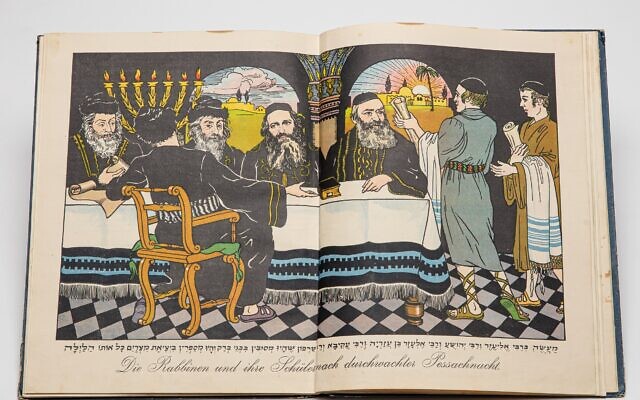 Artifact #6: Haggadah, c. 1930s. Albert Daube’s relatives in Ardmore, Okla. sponsored him to immigrate to the United States in 1937, enabling him to escape Nazi Germany. This Haggadah is one of only a few possessions owned by Albert from the pre-war period. Albert is pictured here on his relatives’ farm in rural Oklahoma shortly after his arrival. He would later serve overseas in World War II. (Donated to the MSJE Permanent Collection by the Daube Family.)
Artifact #6: Haggadah, c. 1930s. Albert Daube’s relatives in Ardmore, Okla. sponsored him to immigrate to the United States in 1937, enabling him to escape Nazi Germany. This Haggadah is one of only a few possessions owned by Albert from the pre-war period. Albert is pictured here on his relatives’ farm in rural Oklahoma shortly after his arrival. He would later serve overseas in World War II. (Donated to the MSJE Permanent Collection by the Daube Family.)
Gallery 3: Entering a New Era
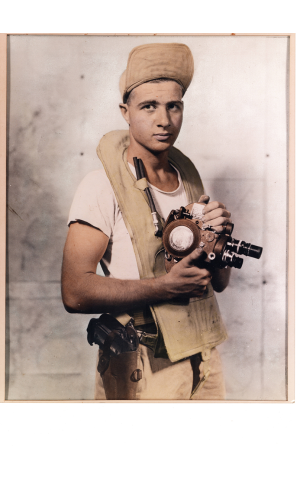 Artifact #7: USAAF Cap, c. 1944. Fred Kahn of New Orleans, La., served in the South Pacific toward the end of World War II. His cap, shown here, bears an insignia reflecting his role as an aerial photographer with the Army Air Forces (USAAF). (Donated to the MSJE Permanent Collection by Catherine Cahn Kahn.)
Artifact #7: USAAF Cap, c. 1944. Fred Kahn of New Orleans, La., served in the South Pacific toward the end of World War II. His cap, shown here, bears an insignia reflecting his role as an aerial photographer with the Army Air Forces (USAAF). (Donated to the MSJE Permanent Collection by Catherine Cahn Kahn.)
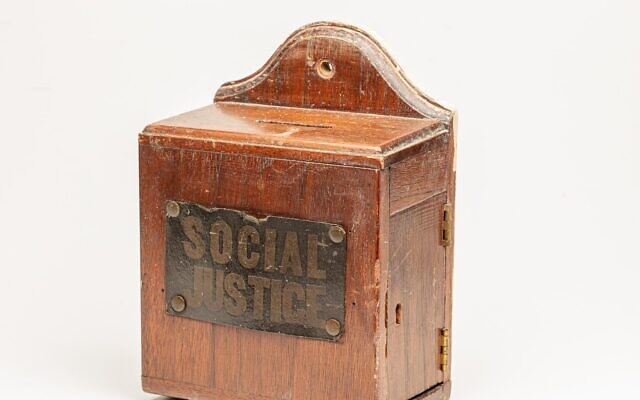 Artifact #8: Tzedakah Box, c. 1960s. Rabbi Julian Feibelman of Temple Sinai in New Orleans supported numerous social justice causes during his leadership from 1936 to 1967, including civil rights initiatives and interfaith dialogue. This tzedakah (charity) box included a specially applied label designating the funds donated for social justice. (Donated to the MSJE Permanent Collection by Temple Sinai, New Orleans, La.)
Artifact #8: Tzedakah Box, c. 1960s. Rabbi Julian Feibelman of Temple Sinai in New Orleans supported numerous social justice causes during his leadership from 1936 to 1967, including civil rights initiatives and interfaith dialogue. This tzedakah (charity) box included a specially applied label designating the funds donated for social justice. (Donated to the MSJE Permanent Collection by Temple Sinai, New Orleans, La.)
Artifact #9: Krewe du Jieux Bagel, 2019. During Carnival season, krewes (parading groups) are known for their unique “throws” that they toss to the crowds. Krewe du Jieux, the original of two Jewish parading organizations, became famous for their satire and decorated bagels. (Donated to the MSJE Permanent Collection by L.J. Goldstein.)
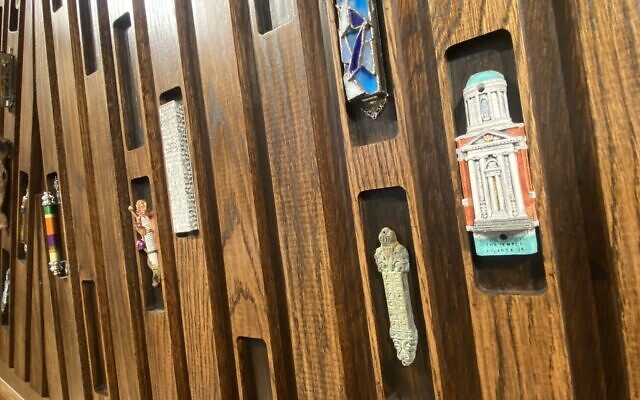 Artifact #10: Various mezuzot. These mezuzot, donated by members of the MSJE Mezuzah Society, reflect the diversity of Southern Jewish experiences. In addition to the range of styles — from classical to glitter to sports-affiliated — each mezuzah also carries its own story, often reflecting generations of history in the American South.
Artifact #10: Various mezuzot. These mezuzot, donated by members of the MSJE Mezuzah Society, reflect the diversity of Southern Jewish experiences. In addition to the range of styles — from classical to glitter to sports-affiliated — each mezuzah also carries its own story, often reflecting generations of history in the American South.
- Arts & Culture
- Community
- Barbara Ducoffe
- Deborah Lamensdorf Jacobs
- Susan Hart Sandler
- Carole B. Hart
- Morris Grundfest
- Mollie Bernstein
- Anna Tucker
- Edythe H. Sofer
- Sarah and William Holtzman
- Rachmiel “Robert” Shapiro
- Ben Lamensdorf
- Albert Daube
- Carla Klausner
- Isabel Wile Goldman
- Bertha Loeb
- Michael Greenblatt
- Rabbi Gaylia Rooks
- Fred Kahn
- Catherine Cahn Kahn
- Ida Pearle and Joseph Cuba
- Betty Lee Lamensdorf
- Bowden-Silverman family
- Mike Lamensdorf
- Rabbi Julian Feibelman
- The Museum of Southern Jewish Experience (MSJE)
- Isidore Newman School
- Southern Federation of Temple Youth (SoFTY)
- Henry S. Jacobs Camp
- Jewish Orphan’s Home
- Bremen Germany
- Galveston Texas
- Ardmore Oklahoma
- New Orleans Louisiana
- Atlanta
- Cary Mississippi
- Portsmouth Virginia
- Texas
- Mississippi Delta
- Canton Mississippi
- russia
- Mississippi
- Knoxville Tennessee
- Nazi Germany
- American South
- southern states
- Bible Belt
- Christian faith
- Big Easy
- Cigarette Case
- Army Air Forces
- Georgia Tech
- great-grandfather’s land
- Tallit
- cotton
- chesed
- Tzedakah
- Kippah
- Haggadah
- Jewish family
- Anti-Semitism
- Army
- World War II
- Jewish immigrants
- Mezuzah Society
- Jewish communities
- communities
- Artifacts
- legends
- tzedakah box
- Krewes
- Krewe du Jieux
- mezuzot
- Jewish Ladies’ Sewing Circle
- Temple B'nai Israel
- Spanish-American War
- Georgia Power Company
- Ramblin’ Wreck
- Ahavath Achim Synagogue
- Scottish Rite Hospital
- The William Breman Jewish Heritage Museum
- Mayfair Club
- Temple Sinai in New Orleans
- civil rights initiatives
- Interfaith Dialogue
- Social Justice
- Susanne Katz Karlick



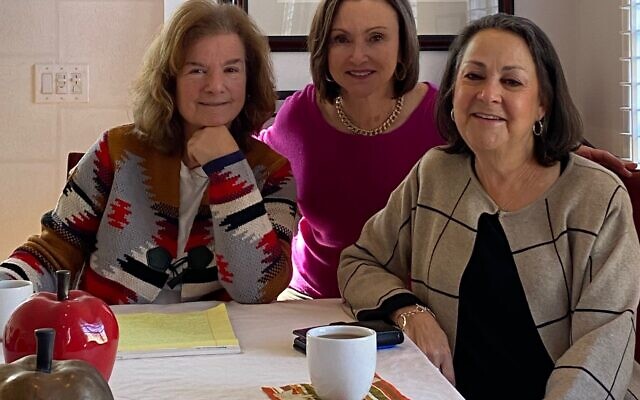
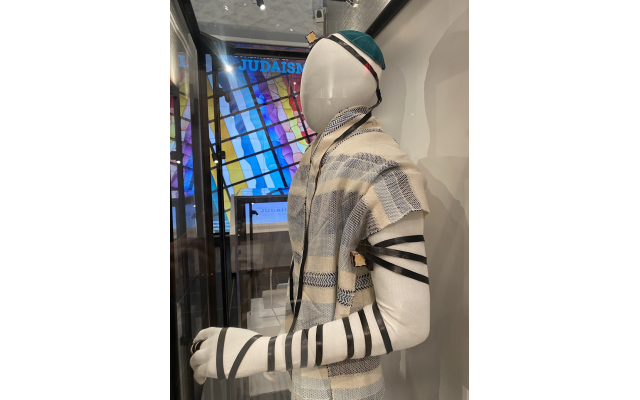
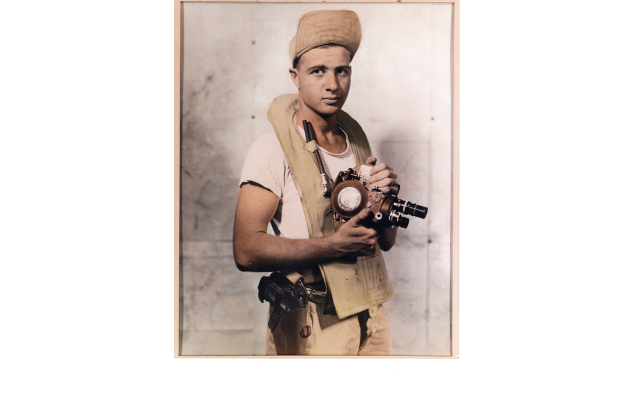
comments